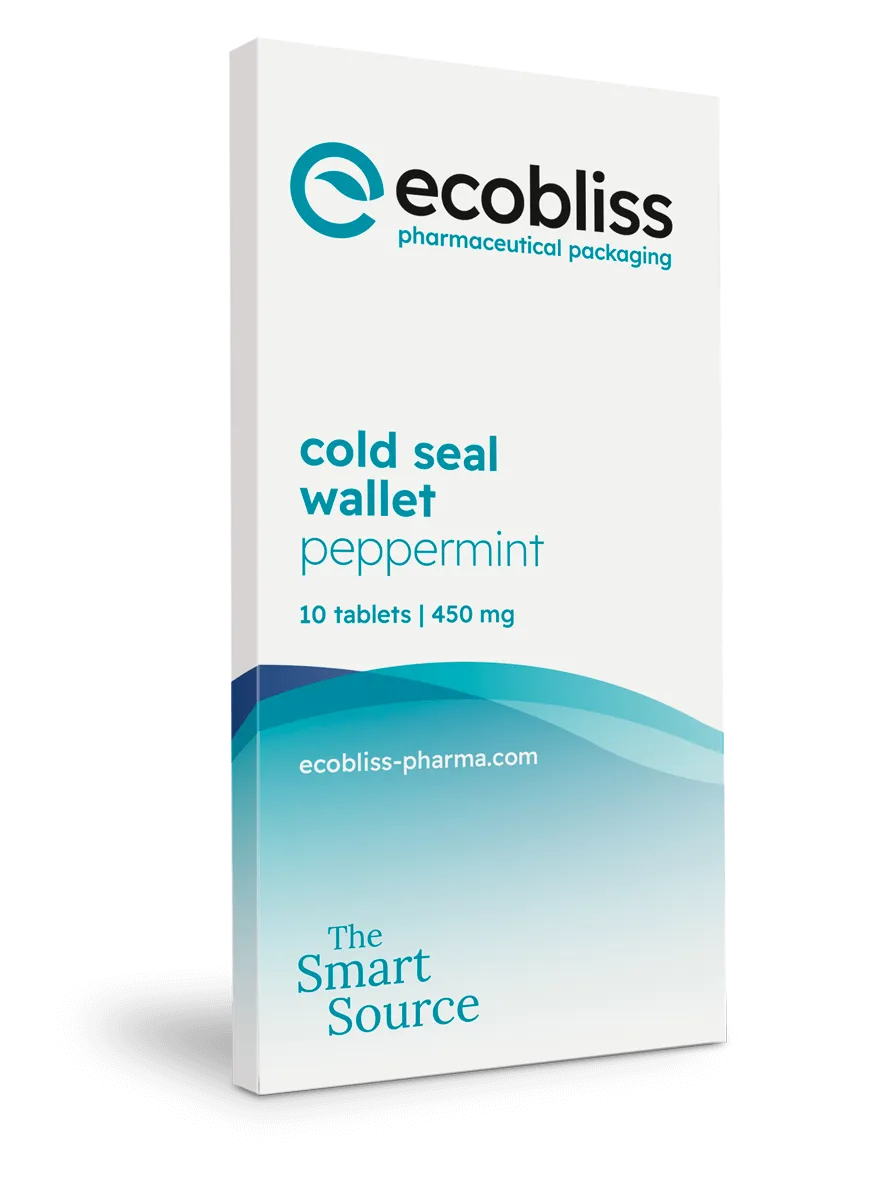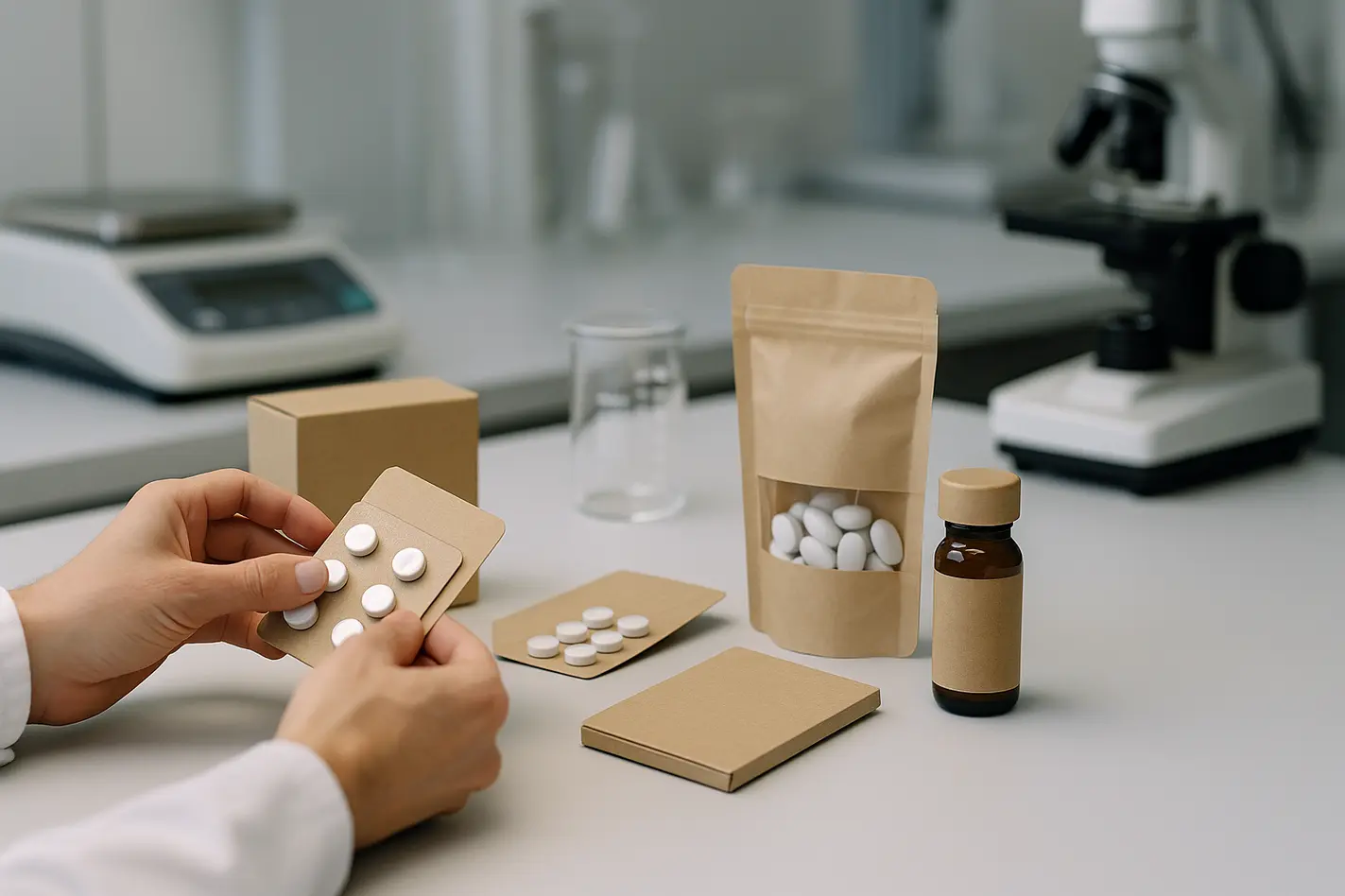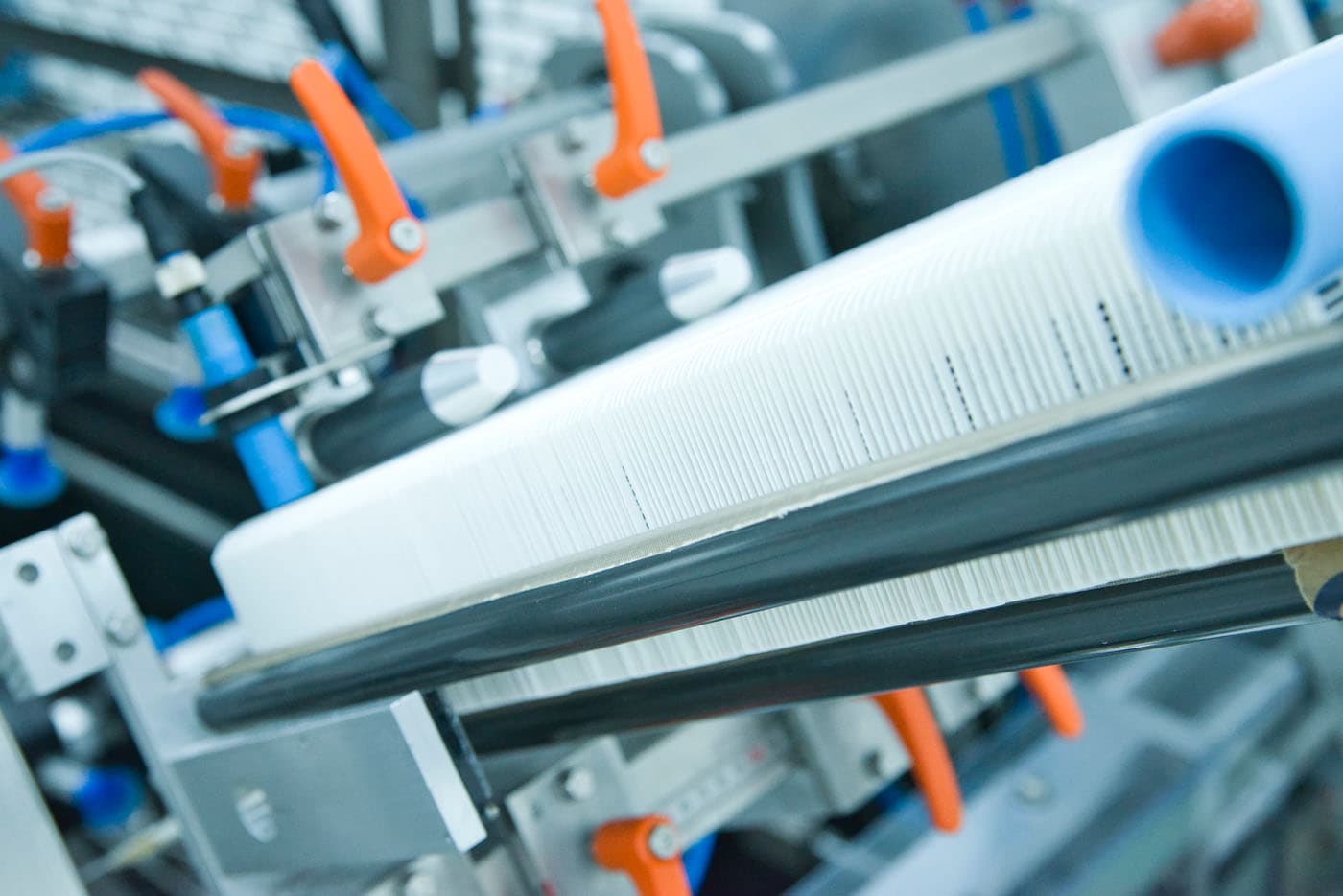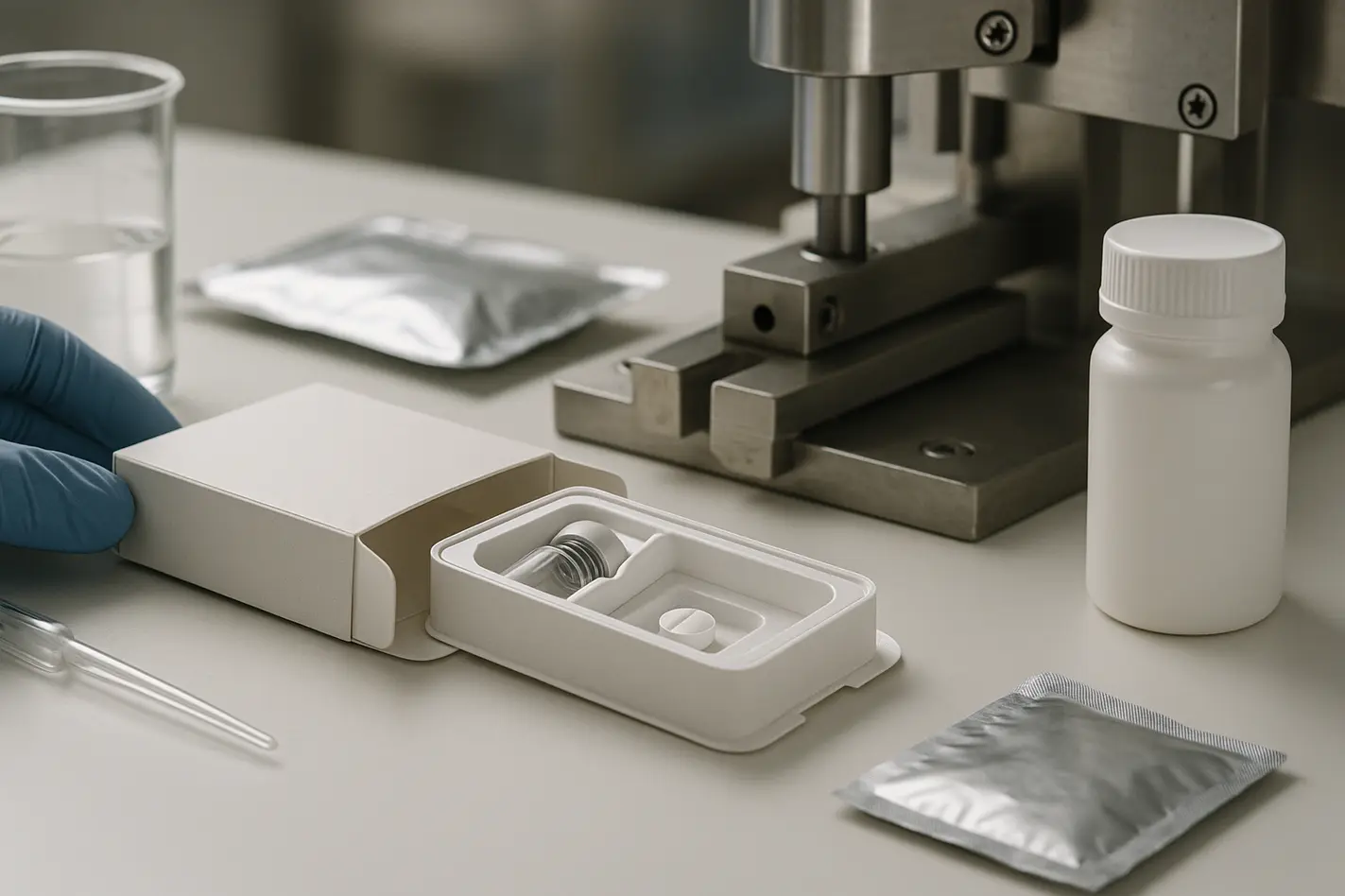Sustainable medicine packaging means using materials and formats that lower environmental impact while still protecting the medicine and meeting pharma regulations. Most improvements are possible in secondary and shipping packs. These parts can often be changed without needing new stability tests, so they are the best place to reduce waste safely.
• Use less plastic or paper by changing box or wallet size
• Avoid multilayer materials that block recycling
• Check that changes meet rules on safety, labeling, and tracking
• Cold seal methods save energy by sealing without heat or glue
• You can test smart formats, like sample wallets, before rollout
What sustainable medicine packaging means in pharma
Sustainable medicine packaging in pharma is packaging that protects the product, supports the patient, and reduces environmental impact. It still needs to meet strict rules for safety and compliance. These rules cover child safety, labeling, and traceability. If these are not correct, the medicine cannot go to market.
This is why most upgrades focus on secondary packaging, like cartons or wallets, and on tertiary packaging, like shipping boxes. These parts can often change without affecting the risk profile of the medicine. A better design helps cut material use and improves distribution without lowering product quality or patient usability.
Why pharma needs to balance function and sustainability
Medicine packs must always work well first. If a patient cannot open a pack or read the label clearly, they may take the medicine the wrong way. That puts safety at risk. Some materials that are easier to recycle do not hold up well in shipping or storage, or they can fail in moisture tests.
This is why all packaging changes go through testing. Each material is checked for its strength, barrier level, ease of use, and safety. Even a stronger paper may swell or tear in humid surroundings. Cold chain products, for example, may need water-resistant coatings or foil layering. These layers must still allow labels, barcodes, and safety info to print and scan clearly. If that fails, the product may face delays or rejection.
How to reduce impact in sustainable medicine packaging
There are several ways to lower packaging waste. The most flexible gains often come from adjusting outer formats. These include:
• Source reduction: Use less material, like changing from a box to a flat wallet or card
• Format change: Choose designs that fit more in a carton and save space in shipping
• Mono-materials: Avoid mixed layers that block recycling machines
• Transport density: Stack or nest formats better to lower freight cost and fuel use
One method we use is cold seal blister packaging. This method applies pressure to close the pack, without heat or solvents. It fits paper-based designs and saves energy. It is also useful for heat-sensitive products or during short-batch development.
Design examples that support sustainable medicine packaging
Well-planned packaging design helps reduce both weight and waste. For example, changing a bulky box into a board-based wallet lowers the material count and simplifies handling. Smaller, lighter packs use fewer resources and cut freight needs. They often guide correct dosing too.
In one project, we helped replace a large syringe storage box with a 10-syringe card wallet. This board wallet kept the syringes safe using slim, recycled paperboard. It also held full instructions and space for track and trace elements. The flat shape increased shipping efficiency and made patient handling easier. Because the design keeps all items in place, the product remains stable during use and storage.
Request this sample to test usability during early packaging trials.
Challenges and trade-offs in sustainable medicine packaging
Each material change has risks. Some paper materials absorb moisture and may not hold structure well. Plastic provides strong protection but may block recycling. Features like child-resistance may require added layers or specialty openings. These additions can affect how easy the packaging is to open or read.
This is why we start with small trial batches. These pilot runs allow teams to test labels, barcode scans, sealing performance, or usability before scaling up. Every new material or format must pass safety, transport, and performance checks. Printing and readability are checked first, because errors can lead to rework or waste later.
To evaluate packaging feel and function directly, you can request a sample for your tests. This lets your team measure opening force, stiffness, and protection level early in the process.
Sustainable medicine packaging and total system impact
Packaging choices have an effect beyond design. They impact transport, cold chain behavior, storage space, and how easy recycling is. Even inks and glue types can change how packaging is sorted or reused later.
New pack formats must still support traceability for pharma. Every batch and barcode must stay clear and scannable. If a material absorbs ink poorly or flakes during shipping, it could block supply chain tracking. This is part of our full review process for every packaging innovation.
We address these details during our work on pharma supply chain sustainability. Our steps help teams review not just what's recyclable, but what fits within product safety needs, shipping demands, and disposal flows.
How to choose formats for sustainable medicine packaging
The best format depends on several clear points. These include:
• Patient type: Seniors, caregivers, or people with reduced hand strength may need formats with easy open features
• Dosing plan: Daily, weekly, or on-demand use affects whether to use single packs or combo setups
• Storage needs: Cold chain medicine may need water-blocking layers or sturdy seals
• Supply volume: Small batches allow more flexibility in structure and testing
• Production method: Depending on manual or machine filling, different specs may suit better
Clarifying these inputs at the start helps teams pick a format that supports safety, clarity, efficiency, and sustainability goals together. It avoids rework later and keeps changes within reach of the production plan.
Why tailored formats support sustainable medicine packaging faster
A format designed for a specific product saves both packaging and setup time. It uses space better, avoids extras, and supports patient handling. Custom parts are easier to test, update, and scale with focused suppliers behind them.
When design, sample, and trial are part of one support path, changes go forward faster. There is less mismatch or testing delay. Our work in the Ecobliss sustainability approach supports this kind of joined-up process. We use measured steps and results for each format change.
What to do next
Start with a review of your current packaging. Focus on outer layers like cartons, wallets, or shipping carriers. These areas bring the most gains with the least risk to the product itself.
See format examples or request a wallet or card sample to test in your own handling steps. Smart, low-waste formats may fit closer to your goals than you think.
FAQ
What is sustainable medicine packaging?
Sustainable medicine packaging is packaging that protects the medicine, helps with correct use, and lowers environmental impact. It still follows pharma safety rules like labeling and child-resistant features.
Where can improvements be made without risking compliance?
Most improvements are possible in secondary packaging like boxes, cards, or wallets, and in shipping packs. These can often change without new stability tests.
How can I test new packaging ideas?
You can request a sample format, like a wallet or cold seal pack. This helps you test how it feels, opens, and prints.
Does sustainability mean switching to paper?
Not always. Paper can be more recyclable but may not protect the product enough. Each material must be tested for moisture, durability, and printability.
What are mono-materials in packaging?
Mono-materials use only one base material, like a full paperboard pack. This makes recycling easier compared to mixed layers of foil and plastic.
Request a free sample now!









